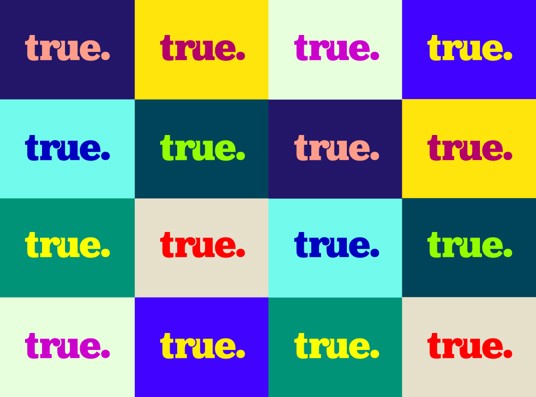Humanising the brand in a digital age
Our very own James Caig inspired the audience at the Online Influence Conference with the prospect of brands and businesses becoming more human.
It’s easy to say that technology is the future. We often do. But there are signs emerging that we don’t want the future we’re building for ourselves might to be entirely digital. Vinyl sales are on the increase, and have been for a while. Books too – about 5% year on year. Waterstones have even just announced they will no longer stock Kindles, thanks to continually disappointing sales.
There is something in the air. A hankering, perhaps, for a return to the real.
Perhaps that’s why this lady in the crowd at the Black Mass premiere touched everyone so much.
Amidst a sea of star-spotters with phones in hand, she was content just to be in the moment rather than feel obliged to capture it.
Even those at the forefront of technology feel it. David Rose, researcher at MIT, has written about his recurring nightmare where “all the wonderful objects we once treasured have disappeared, gobbled up by an unstoppable interface, converged into a slice of shiny glass, its face filled with inscrutable icons that now define and control our lives.”
That’s a depressing thought, and one that should concern those of us involved in brands, marketing and advertising. We might even want to accept some responsibility for it. I recently looked at a book on Amazon. Sure enough, later that day I was served an ad for the same title – re-targeted in the hope that I would ‘convert’ and buy.
Trouble is, I already owned the book. I only visited the page to copy the URL and send it to a colleague to recommend it.
Welcome to the programmatic uncanny valley.
In today’s marketing world, attention is expensive, but intention is currency. The disciplines of search, UX and marketing generally are built on it, but programmatic struggles intuiting intent. People are not always be preditcable, our actions not linear or rational. As a result programmatic's missteps are more likely to alienate an audience than inspire them.
In advertising we understand that increasingly clever technology is something we must accommodate within our thinking. As the Future Foundation/IPA highlighted in their recent report, we’ve all gone mobile, may soon expect to be able to buy everythhing from anywhere, and be open to brands using predictive analytics and AI to improve the services we use.
But, as Tracey Follows has argued, there's a parallel andcounter-intuitive train of thought. As these technologies proliferate, the brands that let their humanity flourish will be the ones that retain competitive advantage.
It is emotions that mark the route out of uncanny valley: intuiting context, using insight and applying empathy. In the here and now, Customer Experience is where we can do most. Econsultancy calls CX “the single most exciting opportunity for marketers”. Trouble is, it’s expensive.
It's expensive because there are more touch points than ever across which customer experience is provided. They’re more diverse too. A truly customer-centred approach requires collaboration and internal integration. And people’s behaviour keeps changing. It becomes harder to track with every passing month. As Google noted (a couple of years ago now), most people don’t buy a product on the device they began researching it.
So, yes, it's expensive, but worth it. Site analytics are great, but without an enterprise solution to cross-device tracking they won't tell you that much. You don’t know whether someone on your site is there for the first time, or simply for the first time in desktop mode. Without that kind of basic context empathy is almost impossible.
And, as Pete Buckley explained in ‘Exploiting the Implicit’, the President’s Prize winning essay for the IPA Excellence Diploma 2012, the more costly communication appears to its recipient, the more effective it is. Only in this case, cost is perceived not in financial terms but in effort. This 'implicit communication', Pete says, is a brand’s body language, and so much more powerful than formal communication such as advertising.
This is how communication works between people,and it's no different with brands - signals are stronger when they’re more human.
So if the expense is worth it, how should brands invest? How should they consider the balance between new technologies and the imperative to retain their humanity?
One way is to invest in options that let automated technology take control. For example, Spotify's Discover service makes it easier for music lovers to choose what to listen to. That's convenient, effort-free and relieves of them of a sometimes paralysing choice. It's human-friendly. But it’s also an example of people outsourcing their decision,and over something people care passionately about. It’s worth thinking about where this might take us.
How about outsourced grocery shopping? A digital food service that recognises our shopping habits, our tastes (perhaps using our favourite recipe books integrated through an API) and concerns (such as food miles or the organic profile of the food) so that our weekly cognitive effort is reduced to a bare minimum?
Sounds great, though it doesn’t appeal to all of us. And it forgets another perspective on technology that doesn’t get much airtime – many people feel disenfranchised by their technology. We have no idea how most of the stuff we use actually works, and when it goes wrong we feel frustrated.
But instead of recognising this with valuable, enjoyable technological experiences, big organisations have developed experiences that alienate us yet further. Think of the supermarket self check out – ostensibly there for our convenience, but untenable without our cooperation and effort. We don’t get any money off for this extra – and sometimes rage-inducing – labour. In this case, the value exchange is out of whack.
This is Marx’s theory of surplus value: the value generated by the labour that goes into making any product. Many businesses are using it in a way that does the direct opposite of what it could do for its customers. John Lanchester articulates this brilliantly:
“This is surplus value created by you, the customer. Companies transfer their inefficiency to the customer, but what they’re also doing is transferring the labour to you and accumulating the surplus value themselves.”
Once you notice the way our labour is encoded into the services we use, you see it everywhere: the post office, airline check-ins, the time you take off work to receive a delivery at home.
So, Spotify or self check out? Should brands make it easier for people to outsource their decision-making? Or work harder to bring humanity back to everyday interactions? Navigating this new territory, this uncanny valley of expectation, is going to be difficult.
Earlier this year that same IPA and Future Foundation report outlined four ways a brand might redefine its role in people’s lives in the future in light of this technological change.
Their model was determined by two factors: whether the engagement is emotional or functional, and how active the consumer is in the relationship.
So that’s one way: decide how you want your brand to add value and build the appropriate services and communications to bring that ideal relationship to life.
Another approach would be to consider what degree of ‘human’ you want your brand to convey.
You could be like Nest – programmable but also adaptive, showing the pseudo-human characteristics of memory and care, conveyed by a cute name and an inviting interface.
Or like Sizable, an ecommerce brand from Australia that attempts an empathetic approach by acknowledging the issue of body shape, a dimension ignored by the category convention of body size. Unfortunately, focusing on this induces a de-humanising effect, reducing womens’ concerns to body image only, ignoring more personality-driven elements such as style, trends, or price.
How about Lark? An anthropomorphic digital service that acts as coach and friend to help users reach their health and fitness goals. You communicate with Lark with text and voice, and it answers back in a non-judgemental way - the superhuman motivator to mitigate your all-to-human fallibility.
Or you could be like this experiment from Smart Car. It takes one realm of human expression – dancing – and applies to another very human characteristic - our failure to act in our own best interest, in this instance road safety.
As ever with digital, you really could do anything. So how do you know where to start?
We recommend trying to answer two questions.
The first question is, What kind of digital brand are you?
The kind of brand that wouldn’t exist without the internet?
Like Nest or Lark, or our client Pet Drugs Online, with a model built around the behaviours and patterns of digital attention that make up your market opportunity.
The kind of brand that has to reimagine its service for a digital age?
Like our client Furniture Village, where digital disruption presented new opportunities and challenges not only for their online business, but also their business as a whole, by creating entirely new paths to purchase and customer expectations.
The kind of brand that can use digital to provide new points of interaction?
Like our client npower, that doesn’t need the internet to exist, but can use digital services to retain customers and establish new forms of contact with them.
The kind of brand that has to fight for attention amid information overload?
Like our client Fuller’s, who run a bricks-and-mortar business that nevertheless needs to be as discoverable online as people's options and acces to information about the things they love each expand.
These are four very different digital challenges. Deciding which best represents you can help bring focus to our efforts.
The second question is, What is it your brand can do that machines can’t (yet)?
Human interventions can create emotions in ways that machines can’t, and people crave connection. Machines can’t organise, lead or support groups of people. They can’t rally people to a cause, or set out a purpose. Technology can facilitate behaviour change, but it can’t inspire it. Machines can’t use intuition. They can’t read between the lines.
When we’re complaining to our energy or broadband provider, we look to the humans on the other end of the phone to hear our frustration and solve our problem. We get angry not necessarily because something has gone wrong, but because a service operator has failed to communicate that they understand how that feels.
And that’s the challenge.
Brands are made of people. Our interaction with brands goes back and forth. We must remember that brands are two-way entities. Getting that right is maybe the human characteristic we need most. Because, as Peter Drucker says, “the most important thing in communication is hearing what isn’t said”.
Making brands more human isn’t exclusively about technology. We don’t just want machines to be more people-friendly. We also want people to act less like machines.
If you’d like to see James’ presentation in full or discuss humanising your brand, please drop us a line.


